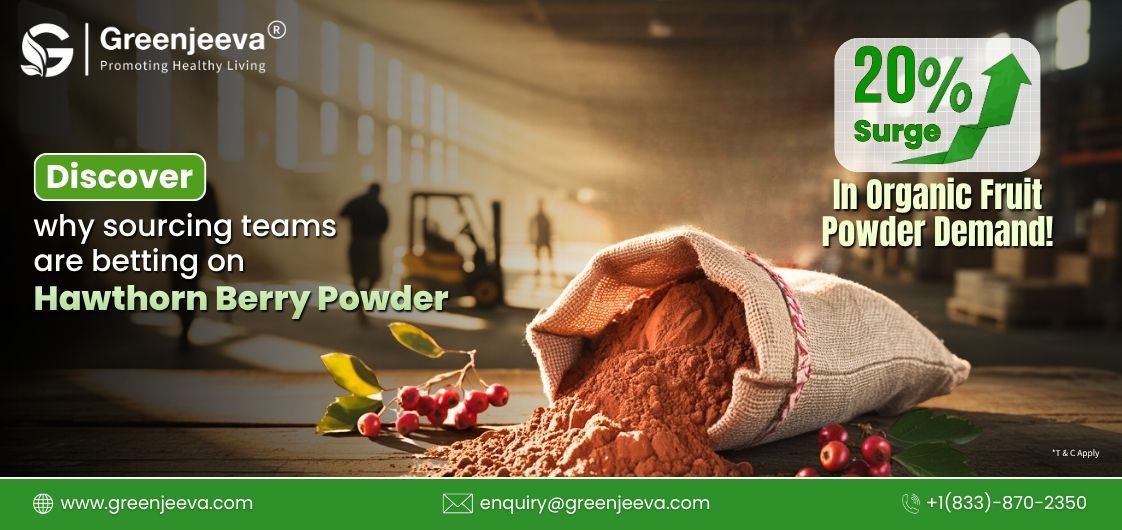Is Zinc Bisglycinate the Right Choice for Your Next Product Line? A Procurement Perspective
.jpg)
What if the mineral you choose today decides the shelf life of your product tomorrow?
The nutraceutical space is entering a new eraand in today’s wellness industry, ingredients don’t just perform—they tell a story. And procurement teams are increasingly at the center of that narrative. Whether it’s the rise of clean-label expectations, global compliance challenges, or the pressure to deliver consistent performance in complex blends, sourcing has never been more strategic.
Among the trace minerals reshaping formulation strategies, zinc bisglycinate is gaining momentum. It’s not just about efficacy anymore—it’s about experience. This form of zinc is showing up in everything from daily supplements to functional foods, not because it’s new, but because it works better—for formulators, for consumers, and for the supply chain.
Sohere’s the real question: Is zinc bisglycinate just a trend—or is it the smarter long-term investment for your next product line?
Let’s unpack this from a procurement perspective—and show you why sourcing smarter isn’tjust about price anymore. It’s about making mineral choices that deliver value at every stage: from production to purchase.
Understanding Zinc Bisglycinate: What Sets It Apart
At its core, zinc bisglycinate is a chelated form of zinc. Chelation refers to the binding of a mineral to an organic compound—in this case, glycine, an amino acid. This bond helps the body recognize and absorb the mineral more efficiently compared to inorganic forms.
But beyond the science, what makes it stand out in the formulation world?
Zinc bisglycinate is considered a "gentler" alternative. It’s known to be well-tolerated and less likely to cause gastric discomfort—an issue sometimes associated with harsher inorganic zinc salts. For procurement teams sourcing for premium wellness products, especially those targeting sensitive demographics such as children, seniors, or plant-based consumers, this matters a lot.
Additionally, its compatibility in multi-ingredient blends is a key advantage. Unlike zinc oxide or gluconate, which may interact or compromise stability, bisglycinate sits well in complex formulations—be it capsules, powders, or beverages. Its minimal reactivity ensures that the final product maintains consistency during production and storage.
From a procurement standpoint, this translates to fewer reformulations, better performance across batches, and lower QA rejection rates. In a cost-conscious and compliance-driven environment, those are real wins.
Market Signals: Why Brands Are Switching to Zinc Bisglycinate
Industry data points toward a steady rise in demand for chelated minerals, particularly in the APAC and North American regions. According to a 2024 global market review by Nutraceutical Ingredients Journal, the chelated minerals segment is expected to grow at a CAGR of 8.4% through 2028—with zinc bisglycinate among the top contributors.
Why the shift?
Brands are aligning with the clean-label movement, and consumers now read labels with a discerning eye. Zinc bisglycinate, with its minimalist profile and high traceability, fits perfectly into “clean, effective, and evidence-driven” narratives that brands are building.
Its use spans across:
Dietary supplements
Functional beverage blends
Fortified food applications
Plant-based wellness kits
Pediatric nutrition and elder care SKUs
Because of its vegan suitability and non-synthetic perception, it’s also found favor in natural product formulations. Brands positioning themselves on the premium shelf or entering niche wellness verticals are increasingly turning to zinc bisglycinate to differentiate.
Procurement professionals must read these signals not just as a trend—but as a structural shift in ingredient sourcing, driven by the consumer's growing demand for quality and transparency.
Cost-Efficiency Beyond Price: What Procurement Teams Should Consider
When evaluating raw materials, price per kilo is no longer the sole metric. Value is a composite of several factors—solubility, tolerance, formulation yield, and even post-launch reputation.
Zinc bisglycinate, while often priced higher than standard zinc salts, presents a compelling case for cost-efficiency across the product lifecycle:
Fewer Additives: Its neutral taste and low metallic reactivity mean fewer masking agents or stabilizers are needed, reducing your formulation complexity.
Improved Tolerance: The user experience improves, resulting in fewer returns, better reviews, and stronger customer retention—especially in subscription-based product models.
Manufacturing Benefits: High flowability and solubility reduce processing challenges, leading to faster batch runs and fewer line interruptions.
Shelf Stability: Its stability ensures minimal degradation during storage, which helps in maintaining product potency and reducing wastage.
Over time, these efficiencies add up—impacting your margin far more than the initial price tag might suggest. Procurement leaders who factor in total lifecycle value are seeing zinc bisglycinate as a wise long-term choice, not a premium luxury.
Supplier Evaluation Checklist: Getting the Right Grade
Choosing the right form is just the beginning. The next step is ensuring you partner with a supplier that meets your quality, compliance, and consistency benchmarks.
Here's a checklist to guide you:
1. Physical Properties:
Consistent particle size distribution (preferably micronized for better dispersion)
Verified solubility in your target medium
Good flow properties for automated processing
2. Assay and Purity:
Zinc content as per pharmacopeial or industry standards (often 20–25% zinc content)
Minimal residual solvents and contaminants
Verified glycine content (to ensure chelation integrity)
3. Certifications to Request:
USDA Organic (if applicable)
ISO 22000 / FSSC 22000
Halal/Kosher compliance
Non-GMO and Vegan Certification
CoA and traceability documents for each lot
4. Traceability and Transparency:
Source of zinc and glycine used
Full supply chain visibility
Vendor responsiveness to audit or regulatory inquiries
A responsible supplier not only helps ensure your brand integrity but also supports smoother regulatory approvals in export markets. Don’t underestimate the value of proactive vendor partnerships when dealing with trace minerals.
Final Call: When Zinc Bisglycinate Makes Strategic Sense
So when does it make strategic sense to source zinc bisglycinate?
When launching high-value SKUs: Especially those marketed as clean-label, vegan, or for specialized demographics like kids and seniors.
When formulating with multiple actives: Where stability and non-reactivity are essential.
When your brand narrative centers on quality and science: Zinc bisglycinate aligns perfectly with modern brand stories that focus on efficacy, user comfort, and formulation intelligence.
Procurement leaders aren’t just sourcing ingredients—they’re shaping product reputations. Zinc bisglycinate may not always be the cheapest option on paper, but its performance across formulation, marketing, and customer satisfaction makes it a smart investment for future-ready brands.
If you’re building a product line that aims to stand out on the shelf—and stay there—this might just be the mineral solution worth betting on.






